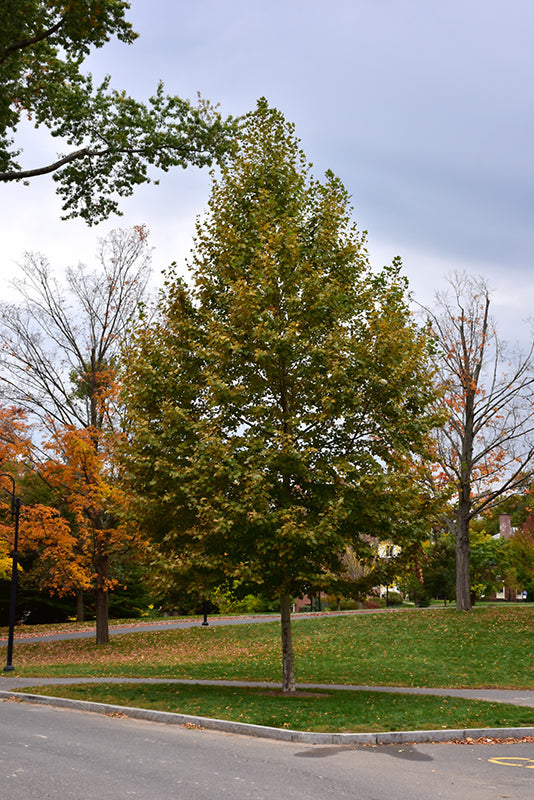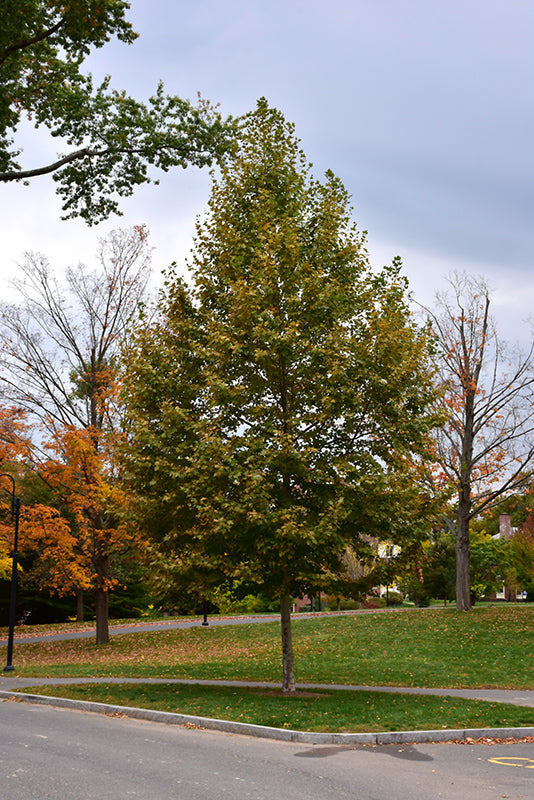Bloodgood London Planetree will grow to be about 90 feet tall at maturity, with a spread of 70 feet. It has a high canopy of foliage that sits well above the ground, and should not be planted underneath power lines. As it matures, the lower branches of this tree can be strategically removed to create a high enough canopy to support unobstructed human traffic underneath. It grows at a medium rate, and under ideal conditions can be expected to live to a ripe old age of 100 years or more; think of this as a heritage tree for future generations!
This tree should only be grown in full sunlight. It is very adaptable to both dry and moist locations, and should do just fine under average home landscape conditions. It is not particular as to soil type or pH, and is able to handle environmental salt. It is highly tolerant of urban pollution and will even thrive in inner city environments. This particular variety is an interspecific hybrid.
Details
Botanical Name
Platanus x acerifolia 'Bloodgood'
Common Name
Bloodgood London Plane Tree
Hardiness Zone
- 6a
Appearance
Max Height
90 feet
Max Spread
70 feet
Plant Form
- Pyramidal
Foliage Colour
- Green
Fall Colour
- Yellow
Flower Colour
Edible
Edible Component
Edible Harvest Period
Edible Use
Fruit Colour
Growing
Flowering Period
Moisture
Adaptable to Dry and Moist
Sunlight
Full Sun
Maintenance
Occasional
Deer Resistance
YES
Get more information about this plant and others with our comprehensive plant finder tool.




